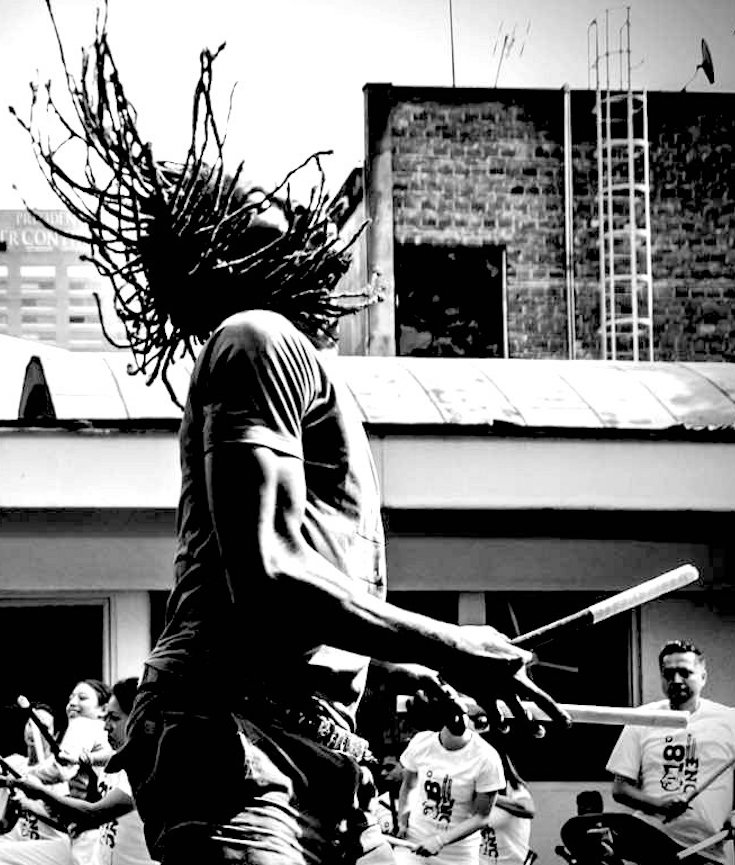The best journeys tend to occur off the beaten path, however, and the “Rivers of History” tour does not disappoint when it comes to sightseeing in Brazil’s less-traveled regions — especially those teeming with African history, culture and influence.
While must-see cities like Salvador and Rio de Janeiro tout some of the larger populations of Afro-Brazilian locals, tour concierge Rosane Lucas said there are still aspects of the region’s Black history that remain untold.
“I’m Black, and I noticed that Rio de Janeiro is missing this part [of our history] a lot,” said Lucas, who runs one of the only tours in Rio exploring the city’s African history. “We have a lot of Black people here, but we’re not very recognized. … So, I decided to do something for my people.”
[mc4wp_form id=”6042″]
 Dancers perform during the Festival of the Good Death. | Mario Tama / Getty Images
Dancers perform during the Festival of the Good Death. | Mario Tama / Getty Images
 A band member from Minerva Cachoeirana. | Mario Tama / Getty Images
A band member from Minerva Cachoeirana. | Mario Tama / Getty Images
 Vendors at the festival. | Mario Tama / Getty Images
Vendors at the festival. | Mario Tama / Getty Images

Considered to be the largest slave graveyard in the Americas, it is estimated that 20 to 30 thousand people were buried, although in official records these numbers were lower, 6,122 between 1824 and 1830. Their bodies were thrown into ditches and burned. The area also served as a garbage dump, which reveals the treatment unworthy of enslaved Africans. In addition to human bones, there were also belongings of the new blacks, such as food remains and objects of daily use discarded by the population. The analysis of the site found that most of the bones belong to children and adolescents. Today the house serves as a cultural center for the rescue of the history of African culture and offers courses and workshops, as well as a library on the black theme. (Website).


You must be logged in to post a comment.